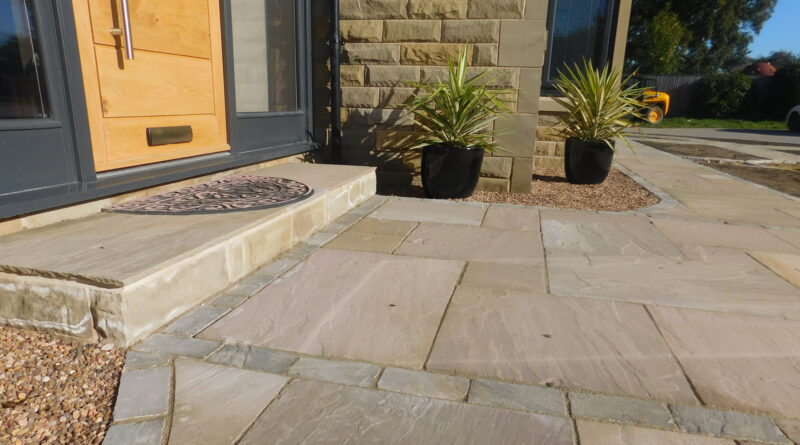How to Maintain Natural Stone Pavers for Long-Lasting Elegance
Natural stone pavers are one of the most popular choices for outdoor landscaping. Whether you want to design a stunning patio, a charming garden pathway, or a durable driveway, natural stone pavers offer beauty, longevity, and functionality. Unlike concrete or brick pavers, natural stone has a unique and timeless appeal, making any space look elegant and inviting.
In this article, we will explore the benefits of natural stone pavers, the types available, how to install them, maintenance tips, and why they are the perfect investment for your outdoor space.
Benefits of Natural Stone Pavers
1. Durability and Strength
Natural stone pavers are incredibly durable and can withstand heavy foot traffic, weather changes, and high-pressure loads. They do not crack easily like concrete pavers and can last for decades with minimal wear and tear.
2. Aesthetic Appeal
Each natural stone paver has a unique texture, color, and pattern. This uniqueness adds charm and character to any outdoor space, making it look sophisticated and visually appealing.
3. Eco-Friendly Option
Since natural stone is extracted from the earth, it is a sustainable and eco-friendly option compared to synthetic materials. It does not release harmful chemicals into the environment and is completely recyclable.
4. Low Maintenance
Natural stone pavers require minimal maintenance. They do not fade over time and only need occasional cleaning and sealing to maintain their look and durability.
5. Slip-Resistant Surface
Unlike some other paving materials, natural stone provides a naturally textured surface, which reduces the risk of slipping, making it safe for walkways, pool areas, and patios.
Types of Natural Stone Pavers
1. Granite Pavers
Granite is a strong and durable stone with a sleek and polished look. It is resistant to scratches and stains, making it an excellent choice for driveways and high-traffic areas.
2. Limestone Pavers
Limestone offers a softer, elegant appearance with natural earth tones. It is best suited for patios, garden pathways, and pool surroundings.
3. Sandstone Pavers
Sandstone has a warm and rustic appeal, making it ideal for outdoor spaces with a natural aesthetic. It is often used for patios, garden paths, and courtyards.
4. Travertine Pavers
Travertine has a porous texture, which gives it excellent water absorption properties. It stays cool even in hot temperatures, making it perfect for pool decks and outdoor patios.
5. Bluestone Pavers
Bluestone is a dense and highly durable stone that comes in deep blue and grey tones. It is commonly used for driveways, pathways, and outdoor stairs.
How to Install Natural Stone Pavers
Installing natural stone pavers requires careful planning and execution. Follow these steps for a successful installation:
Step 1: Plan and Measure
Determine the area where you want to install the pavers. Measure the space and sketch a design layout to visualize the pattern and arrangement.
Step 2: Prepare the Base
- Clear the area of any grass, debris, or existing materials.
- Dig out the ground to a depth of at least 6-8 inches to create space for the base layer.
- Compact the soil using a plate compactor to create a stable foundation.
Step 3: Add the Base Material
- Pour a layer of crushed stone or gravel (4-6 inches thick) to provide a solid base.
- Compact the base thoroughly to prevent shifting.
Step 4: Lay the Sand Layer
- Spread a layer of coarse sand (about 1-2 inches thick) over the base.
- Use a straight edge to level the sand evenly.
Step 5: Lay the Pavers
- Begin placing the natural stone pavers according to your chosen pattern.
- Ensure each paver is tightly fitted with minimal gaps.
- Use a rubber mallet to tap the pavers into place and keep them level.
Step 6: Fill the Gaps
- Once all pavers are in place, spread fine sand or polymeric sand over the surface.
- Sweep the sand into the joints and lightly mist with water to help it settle.
Step 7: Seal the Pavers (Optional)
- Applying a sealant can enhance the color and protect the surface from stains and moisture.
- Allow the sealant to dry completely before using the area.
Maintenance Tips for Natural Stone Pavers
- Regular Cleaning: Sweep or hose down the pavers regularly to remove dirt and debris.
- Weed Prevention: Apply a weed barrier or use polymeric sand to prevent weeds from growing between the pavers.
- Sealing: Reapply a sealant every few years to maintain the stone’s natural beauty and protect it from moisture.
- Repairing Damage: If any pavers become loose or damaged, replace them promptly to maintain the stability of the surface.
Why Choose Natural Stone Pavers for Your Project?
Natural stone pavers are a worthwhile investment for any outdoor space. They provide unmatched beauty, durability, and sustainability, making them ideal for driveways, patios, walkways, and pool areas. While they may have a higher upfront cost than concrete or brick pavers, their long lifespan and low maintenance requirements make them cost-effective in the long run.
Conclusion
Natural stone pavers are a superior choice for homeowners and landscapers looking to create stunning and long-lasting outdoor spaces. With various options like granite, limestone, sandstone, travertine, and bluestone, you can select the perfect paver to match your design preferences and needs.


